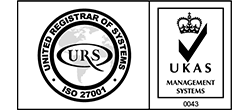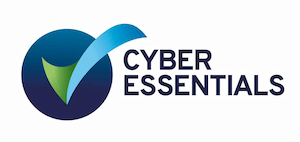
Qualifications-Based Selection (QBS)
When you hire a new member for your team, you typically specify a salary range and pick the most qualified applicant to do the job. It’s a qualifications-based selection.
There are many important parallels between the internal recruitment process and a method that aims to replace the traditional Request for Proposal (RFP) when companies are looking to buy professional services – Qualification-Based Selection or QBS for short.
This article will share the definition of QBS, myths that stop companies from implementing its framework and many of the benefits that come with the utilisation of the QBS framework.
What is Qualifications-Based Selection (QBS)?
In their QBS Agency Search Guide, the Canadian Institute of Communication Agencies defines QBS as a procurement process that focuses on finding the most qualified provider of professional services, at a fair and negotiated price, instead of the least qualified provider, at an artificially low price.
They also identified that, for decades, QBS has been utilised primarily in the selection of architecture and engineering services around the world, but it is also making considerable inroads into other professional services such as advertising, creative services, management consulting, and information technology.
It’s ideal for specialised, sophisticated, and expensive professional services, and it’s a great way to avoid the problems that come with the traditional price-based Request for Proposal (RFP) utilised in many government but also private procurements.
Almost every professional services provider association on this planet recognises QBS as a best practice, with particularly strong backing from the architecture and engineering industries, where it was born.
So what is the fuss all about? Let’s dive into the advantages of a qualifications-based procurement approach in the next section.
Ways in which QBS can Improve Your Project
This process creates a highly-competitive process in which professional services firms submit qualifications to the owner and actively prove why they are the best company to carry out the job in question.
This leaves you, the owner, in charge of choosing the most qualified and competent provider. You stay in control.
You ensure that attention is given to your desired project outcomes.
Cost will always be an issue but with QBS, the quality of your project won’t be compromised because you avoid choosing a company based on the lowest bid. The cheapest price is likely to deliver low quality or a project that is not fulfilling the full scope of work.
All in all, this framework creates an atmosphere of trust where you build the project scope together with your service provider instead of waiting for the cheapest price to float in while hoping for the best outcome.
It works in control engineering and many other industries including IT and technology support with significant financial gains.
Dr. Paul Chinowsky (University of Colorado) and Dr. Gordon A. Kingsley (Georgia Institute of Technology), both well-known public policy experts, conducted one of the most notable QBS studies.
When QBS was utilised to buy engineering services, they discovered the benefits below. Again, it’s logical to assume that adopting QBS to acquire other related professional services, such as those in the creative professions, would provide similar benefits.
✅ Growth in project costs is lower.
✅ Growth in project schedules is slower.
✅ The success of their projects was assessed as excellent or very high by a large percentage of QBS clients.
✅ Social considerations like as sustainability were more likely to be addressed in QBS procurements.
✅ Procurements made using QBS were more likely to satisfy the concerns of a larger number of stakeholders.
✅ QBS procurements encourage greater innovation while also safeguarding intellectual property.
✅ For complex projects, QBS procurements reduce risk.
Creating your QBS Framework
Step #1 – Disclose your Budget

When purchasing professional services, it is nearly impossible for the buyer to identify all of the elements while focusing just on the price.
As a result, it is advisable to do the exact opposite.
Define the budget so that suitable service providers can opt-in or out of your opportunity, and then ask those who do to show how they are most equipped to solve the buyer’s business challenge at that budget level.
It’s unlikely that two companies deliver the same value but for massively different prices. What is likelier to happen instead is that you buy an empty promise and waste money on fixing the new problem while the original is still not resolved.
Step #2 – Make Price Compliance a Deciding Criterion
Following the first rule y disclosing the budget, it becomes clear that price can never be used as a criterion for evaluation.
As a result, price compliance must be an obligatory criterion by default, not the price itself.
You might think that by disclosing your budget you are leaving money on the table. However, it’s still unlikely that two companies deliver the same scope of work and become equally valuable project partners but with completely different prices.
You also risk paying for scope expansions and change orders because the initially low bid is not profitable enough – and many companies know and exploit that.
Step #3 – Define Evaluated Decision Criteria
When you buy professional services, you want advice to address a specific opportunity or problem, and the best advice will come from an expert who is familiar with that specific opportunity or problem and has provided consistent and repeatable advice to other similar clients facing similar problems or opportunities.
Obviously, any professional service provider can claim to be an expert.
As a client, your responsibility is to request that proof that makes them experts, then analyse that proof and create a hierarchy of competence.
Step #4 – Evaluate the Proof of Expertise
The evidence that you should seek from professional services providers is made up of three categories and weightings, each requiring distinct evidence submissions:
- Experience (60%): successfully delivered projects, Net Promoter Score, case studies, testimonials
- Methodology (30%): frameworks by which the service provider operates to consistently deliver high-quality projects and services
- Thought Leadership (10%): relevant education or training, accreditation
Step #5 – Define Scoring Categories for Criteria
You defined expertise as your evaluation criteria and made clear how you are going to measure its proof. Now it is time to find a scoring system that separates the varying levels of expertise and ultimately favours your project’s outcome.
Keep in mind that this scoring system does not need to be fair to allow for all service providers to be able to participate. The system is all about you and your desired outcomes because you want a partner that is qualified and equipped to carry out the work that addresses your very unique opportunity or problem.
Following the five previous steps, your QBS framework will enable you to find the most appropriate company to elevate your business.
Common Objections to QBS
While QBS has been known, implemented and successfully executed for many years in different industries, the pain of change drives speculations about efficiency and leads to objections.
Let’s address some of the concerns together.
Objection #1 – I will always have to pay a huge premium for the most qualified service provider.
Only the best-qualified service provider receives the exclusive right to negotiate a reasonable scope and pricing with you as the customer.
If you and the service provider can not agree on a scope and pricing that is acceptable to you both, you will move on to the next most qualified service provider.
This is very similar to the example of recruiting a new employee at the beginning. You get the perfect value for the money you are willing to spend.
Objection #2 – It is expensive to implement.
Implementing a new process and stakeholder training will always cost time and money. There is no way of denying that.
BUT, a really important but on top of that, QBS reduces total procurement cost and saves time from the very first time it is used.
And furthermore, there is no need to buy new technology nor to hire new people to manage this process and its new policies.
Objection #3 – It takes much longer.
The total procurement time is actually shortened because all objectives, stakeholders, budgets and evaluation criteria are communicated beforehand.
This leaves very little room for last-minute change orders or scope expansions.
Objection #4 – Price can be an evaluated criterion.
It can’t. Because even with an evaluation score as little as 10%, it becomes the main driver in the decision-making process.
Define a budget and do not undermine its relevance by compromising on your project deliverables.
Finding the Right Fit
Nobody wants to end up with a poor service provider that can’t deliver great results. Your investment goes down the drain, and your project suffers.
Let’s arrange a quick, 10-15-minute obligation-free chat. We are always happy to walk you through our process and exchange experiences.
Here's our live calendar!Questions: [email protected]
Continue reading:
Defend & Invest – Your Technology Strategy for 2022
IT Support & Services Buyer’s Guide 2022 – IQ in IT
The 8 Key Mistakes That Can Cripple Your Business Continuity Plan
















Recent Comments